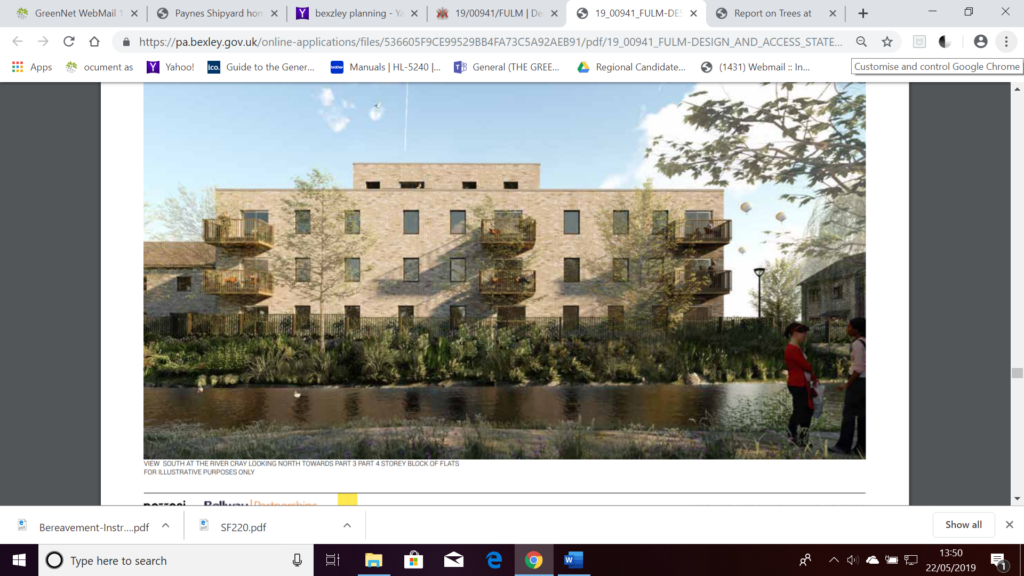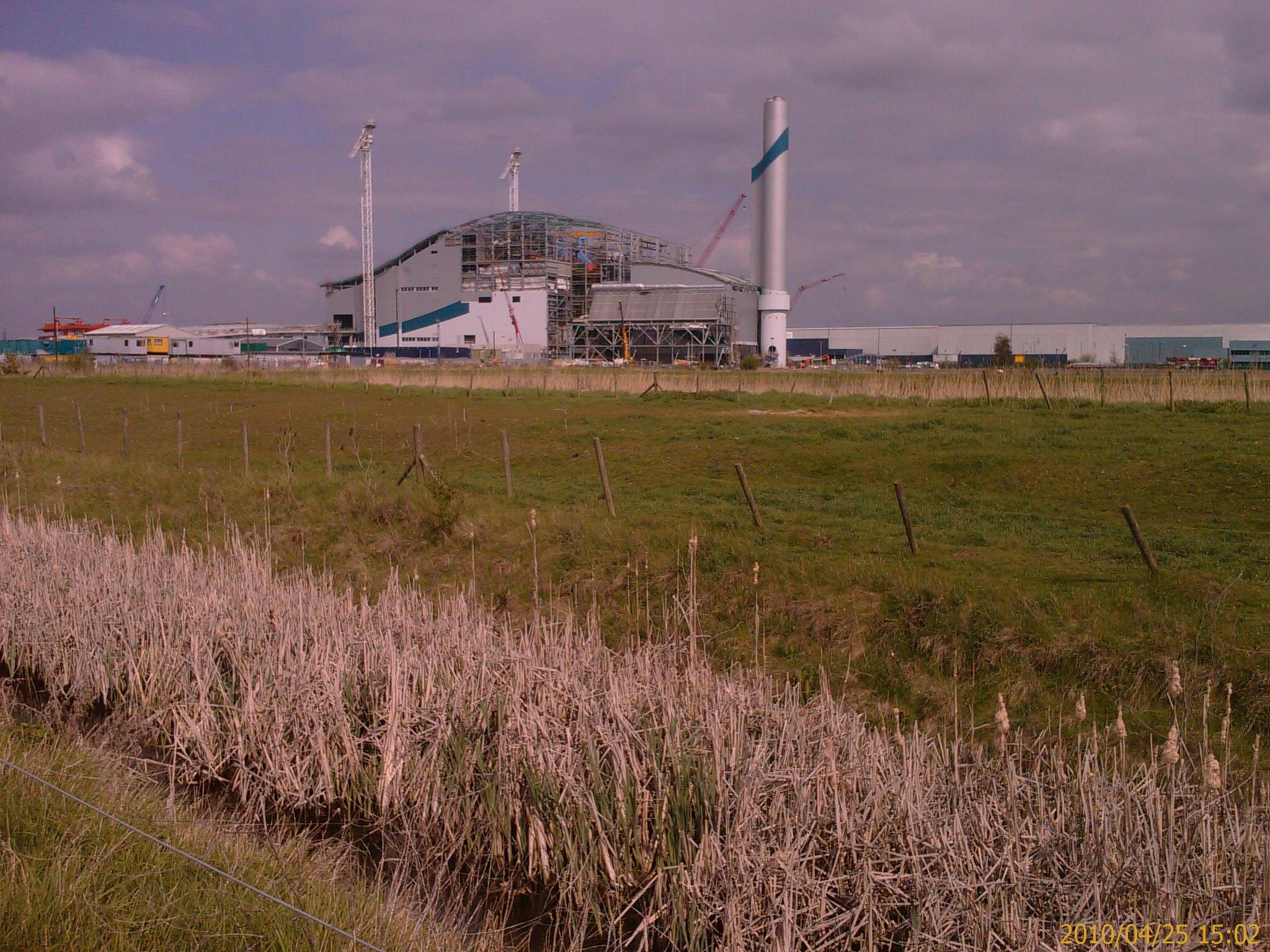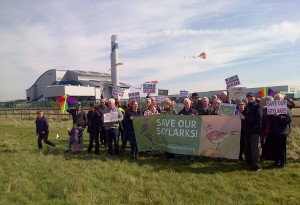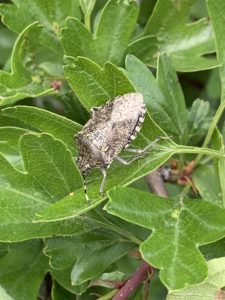An event put on by our friend in conservation, Sara.
http://www.bexleywildlife.org/wp-content/uploads/2019/07/Forest-Fun-at-Braeburn-Park.pdf
An event put on by our friend in conservation, Sara.
http://www.bexleywildlife.org/wp-content/uploads/2019/07/Forest-Fun-at-Braeburn-Park.pdf
Group stalwart Ralph Todd reports on the recent very well attended Bexley RSPB 40th anniversary classical music concert with Sidcup Symphony Orchestra, and provides a copy of the programme notes:
http://www.bexleywildlife.org/wp-content/uploads/2019/05/40th-Anniversary-Celebration-of-Nature-Concert.pdf
http://www.bexleywildlife.org/wp-content/uploads/2019/05/Concert-Programme-final-version.pdf
A planning application has been submitted for housing right next to the River Cray, a Site of Metropolitan Importance for Nature Conservation and a key wildlife corridor supporting protected species. The deadline for comments and objections is Monday 10th June 2019. Whilst the site has previously been used for industrial purposes and the developer has listened to some of the comments about biodiversity made to its own public consulatation, several grounds for concern remain, and readers are encouraged to submit their views on these matters. A sample submission is provided below. Despite the fact the developer tries to play the effects down, most people will agree that putting up a four-storey apartment block – and a number of other dwellings – very close to the river, is going to have a lasting and very negative impact on the countryside feel of the Cray and its environs downstream of Maiden Lane bridge. The ecology survey included only one day of fieldwork, in the middle of January 2018, and is consequently poor to lacking in important detail. The carbon emissions and car use considerations of any new development are also increasingly important.

(Above: developer’s own artist’s impression of its proposed four storey building right next to the River Cray bank).
The planning application, reference 19/00941/FULM, is for the demolition of existing buildings, rebuilding of the existing Barn to provide 35 residential units (Use Class C3) as Affordable Homes (Shared Ownership and Affordable Rent) comprising 22 x 2 bed flats, 1 x 2 bed house, 7 x 3 bed houses and 5 x 4 bed houses and provision of car parking, cycle parking, landscaping and associated infrastructure.
Comments can be sent to DevelopmentControl@bexley.gov.uk Include the application reference number in the subject line. Or you can register to comment online. Detailed documentation about the plans can be found here:
Bexley Natural Environment Forum is submitting comments on this application, but the more people do so the better. While the BNEF document is awaited, this personal submission provides a ‘crib’ for the sorts of things that those who follow ‘Bexley Wildlife’ might want to look at:
COMMENTS ON PLANNING APPLICATION 19/00941/FULM
BELLWAY LONDON PARTNERSHIPS. PROPOSED MAIDEN LANE, CRAYFORD, DEVELOPMENT.
Chris Rose BSc (Hons), MSc.
15 Thirlmere Rd, Barnehurst, DA7 6PU. chrisrose@gn.apc.org
My personal interests/expertise are that I volunteer with Thames21 along the River, managing habitat and clearing litter/fly-tipping and I am volunteer Site Manager of Thames Road Wetland at the other end of By-way 105. I have done considerable amounts of wildlife recording in these and other parts of Bexley.
My views and concerns about this proposal are as follows:
CLIMATE/ENERGY/SUSTAINABILITY
CAR DEPENDENCY
BIODIVERSITY
River-side vegetation will soon fill any bare areas, providing material of local provenance without the developer having to do it (though the fact they are now talking about using plants of local provenance at all indicates some progress in their thinking ….). As I said before, if the applicant wants to do something useful regarding vegetation on the lower Cray it should forget about ‘planting’, and instead help bash the Himalayan Balsam that has now got a foothold here, and the Giant Hogweed on the other side of the river opposite its land – and/or encourage residents to join Thames21 in doing so.
VISUAL IMPACT
ENDS.
Chris Rose.
A public inquiry into a second waste incinerator on Erith Marshes in Belvedere is imminent.
GLA PRESS RELEASE 21/5/19 ‘Stop allowing new toxic waste incinerators in London’ Mayor tells ministers
· Sadiq: Another polluting plant ‘the last thing we need’
· Capital currently has three incinerators – with two more set to open
The Mayor of London, Sadiq Khan today called on the Government to stop permitting the building of ‘archaic’ polluting waste incinerators as he outlined his opposition to a proposed incinerator in Bexley, which is set to raise harmful NOx pollution levels. Sadiq strongly believes that burning waste in incinerators worsens London’s already toxic air quality and hinders boroughs from reaching recycling and waste reduction targets. London has the highest incineration rate (54 per cent) in the UK for management of local authority waste, yet the lowest recycling rate (30 per cent).
The focus must be on reducing waste, particularly plastic, and protecting residents from pollution. The Mayor is encouraging boroughs to help residents to recycle food, and stop buying needless plastic bottled water, which should help to reduce landfill and mean that only truly unrecyclable waste (e.g disposable nappies and composite packaging materials that combine card, plastic and foils which cannot be separated) would need to be incinerated.
There are already three incinerators in the capital – Bexley (in the same location as the proposed site), Enfield and Lewisham. Another is being built in Sutton and is due to open this year, while a further plant has been approved for development in Enfield, both of which were approved by ministers during the previous mayor’s terms.
City Hall has heard from worried Bexley residents and MPs who strongly oppose the plans and are concerned about the impact on the local area. The plant would emit more than four times as much harmful NOx as the existing local incinerator and the Crossness sewage plant combined. It could also emit arsenic, nickel and other metals that could damage the health of residents and workers both nearby and across the river.
The Mayor has reviewed the application by waste management company Cory and disputes claims that the incinerator will generate low-carbon heat and power and meet his minimum CO2 requirement for energy from waste facilities, which aims to reduce carbon emissions and help tackle London’s climate emergency. There is also insufficient evidence to make the case that there are enough homes and buildings nearby that could use heat generated from the new incinerator. The existing incinerator facility (Riverside Resource Recovery Facility) on the site has demonstrated more than enough capacity to supply sufficient heat for existing and proposed homes and workplaces in the surrounding area.
The Mayor does not have powers to stop the incinerator because final approval for the facility lies with the government. The Mayor is a statutory consultee and will oppose this application through representations made to the Planning Inspectorate, which will make a recommendation on the application to the Government. Today he outlined his opposition in a report to Secretary of State for Business, Greg Clark.
The Mayor of London, Sadiq Khan said: “London’s air is a toxic air health crisis and the last thing we need, in our modern green global city is another harmful waste-burning incinerator polluting our city. Emissions from incinerators are bad for our health, bad for our environment and bad for our planet. Instead of granting permission for an unnecessary new incinerator that will raise pollution levels in the boroughs of Bexley and Havering, the Government should focus on boosting recycling rates, reducing the scourge of plastic waste and tackling our lethal air. I am urging ministers to reject this proposal.“
ENDS Notes to editors
• The Mayor’s policies focus on significantly reducing waste and achieving 65% recycling municipal waste by 2030. Approving another EFW incinerator would jeopardise achievement of these goals.
• City Hall modelling shows that with existing and recently permitted incinerators, London has enough incineration capacity and does not need another incinerator like this to manage London’s non-recycled waste if the Mayor’s waste reduction and recycling targets are met. It would impact on achieving the Mayor’s reduction and recycling targets set out in his London Environment Strategy.
• DEFRA in its Resources and Waste Strategy have also said that additional energy from waste infrastructure may not necessary be required if the Government’s recycling and landfill reduction targets are met. Government are also considering a incineration tax if their polices for cutting waste and increasing recycling are not effective
• Waste incinerators are well regulated by the Environment Agency, who will set emission limits based on the current best available techniques for emission reduction. However this does not mean that there are no impacts on pollution and people’s health. The health impact of any pollution source depends on where it is, how much pollution there already is in the area and how many people live within the pollutant “plume”.
• The development consent order for the proposed incinerator includes the applicants assessment of impacts on local air quality as part of their environmental assessment.
• For many pollutants, such as NO2, the health impacts are independent of the type of source: NO2 from an energy from waste plant is just as harmful as from a diesel car. There is, however, a growing body of evidence that the impacts of particulates may be influenced by the source and composition of the particles.
• The evidence on the health impacts of Energy from Waste plant is continually evolving. The GLA has commissioned a review of the current available evidence on the local impacts of Energy from Waste on people’s health in London so that we can fully understand the problem and Public Health England are working with Imperial College London to research the impacts of waste incineration across the UK.

Karen Sutton provides an update from Crossness LNR at Erith Marshes about the latest issues, wildlife and public events at the site ……..
Crayford Marshes success, and Cory’s plans that will impact Crossness Nature Reserve:
Back in 2016, many of you who opposed the Cory Data Centre plans on the Cory Fields at Crossness – the Save Our Skylarks campaign – may recall a tandem development threat to nearby Crayford Marshes where Roxhill were proposing to build a ‘Strategic Railfreight Interchange’ scheme on Green Belt-designated open land and subsequently threaten the breeding habitat of Skylark and Corn Bunting. Many of you will remember completing petition letters alongside those for the Cory development. Following a lengthy Public Inquiry examining the scheme, the Secretary of State has just announced that he has refused the scheme! This is an amazing result and demonstrates that there can be successes where wildlife-threatening planning applications are concerned. Unless successfully challenged in the courts, this decision is final and is of course fantastic news for those of us that value our diminishing open spaces and associated wildlife.
Unfortunately, we lost the case for Cory Environmental to build on the Cory Fields (Borax Fields) at Crossness back in 2016, where at least two pairs of Skylark appear to be breeding again this year, so we will unfortunately see the development of two, four-storey data centres here, but the Crayford Marshes result does give us some hope in the fight against Cory’s most recent plans to build the ‘Riverside Energy Park’ (REP) (another waste incinerator squeezed between their existing Norman Road waste incinerator and Crossness Nature Reserve) immediately north of the West Paddock and east of Sea Wall Field.

Save our Skylarks demonstrators lined up for a photoshoot with Cory’s existing incinerator in the background.
Due to the size of the REP proposal, this also goes before the Planning Inspectorate who has begun examining the case. The hearings start at the beginning of June, and on 4th June, the Examiner will undertake Accompanied Site Inspections, including a visit to Crossness NR to look at the impacts. On the evening of 4th June, the first Open Floor Hearing is scheduled to take place at 18:30 at the Belvedere Community Centre, DA17 6AA. This will be an opportunity for the Friends of Crossness Nature Reserve to attend and voice their concerns to the Examining Inspector so do please go along and have your say. The 5th June will see an Issue Specific Hearing on Environmental Matters which takes place at 10am at the Slade Green Community Centre, DA8 2EL.
Again, the fact that the Roxhill development was declined at Crayford Marsh, does give us hope that the Cory plans will also be rejected, so all objections to this scheme are incredibly valuable.
Return of the Water Voles (and subsequent temporary disruption):
Many of you will remember that we suffered an unfortunate pollution incident in December 2017, and that last year saw a massive clean-up operation. In order to protect the Water Voles residing in our ditches and reedbeds, we began a rescue operation that saw nearly 60 Water Voles captured and taken into captivity while the clean-up took place. Some of these Voles were released elsewhere as part of other conservation projects and where the Crossness Voles would help diversify the gene pool, while others underwent a captive breeding programme for future release back to Crossness. I am pleased to report, that following the results of surveys to be undertaken this week, the Voles will be released back in to the Protected Area week beginning 20th May.
Following the results of the above-mentioned Water Vole surveys in the Protected Area of the nature reserve, an altered strategy has now been proposed. It seems that the few remaining Water Voles that evaded capture at the time of the pollution incident, have done incredibly well and there are field signs everywhere! This could indicate that they have reproduced and there is a larger population present, or it could be that fewer Voles have simply expanded into the more widely available habitat. With the uncertainty of which scenario is at play here, and the fact that Water Voles are very territorial, it has been decided that only 15 Water Voles will be returned to the Protected Area, and that a hard-release option will now take place (as opposed to the soft-release previously mentioned). All Voles will now be released directly into the reedbeds on one day (it was decided that if there are many territorial Voles already present, they will harass new Voles in pens and so a hard-release is now a better option for their welfare). We are investigating the possibility of releasing the remaining Water Voles at another of our Thames Water sites on the north of the Thames.
So there will be a lot of activity on Monday (20th May) when there will be the Water Vole ecologists, plus a number of Thames Water and Environment Agency personnel around, so I apologise now for the disturbance to visitors. On the same day, the Water Vole fencing that is currently bounding the southern section of the Protected Area, will be removed. Again, a bit of disturbance, but it will be nice to see this removed finally!
Work coming up:
I don’t have dates yet, but at some point soon, there will be some flushing through of culverts on the Southern Marsh and at the bottom of the Nature Reserve. As a separate contract, there will also be a small boardwalk installed by the pedestrian bridge at the Bridge Meadow (east) end of Crossness Southern Marsh to deal with the section of path that repeatedly floods (where stepping stones are currently placed).
This work will start on 28th May, so expect some minor disturbance as a result of this.
Wildlife highlights:
The reedbeds are once again alive with the sight and sound of Reed and Sedge Warblers, which is always nice. A Cuckoo is still being seen and heard in the Protected Area, and I’m really pleased to report that Bearded Reedlings appear to be breeding again. Two birds have been seen taking nest material to different locations. This is particularly good news, because they bred for the first time in the Protected Area reedbeds in 2017, but then the pollution incident would have prevented them from returning to the same area to breed in 2018. Flocks were seen frequently in the Island Field reedbeds around the period of the rare Penduline Tit presence, and breeding therefore hopeful, but it is really good to see confirmed breeding activity of this wonderfully attractive species.
Lapwing appear to be breeding again on the West Paddock following breeding success last year. In the past week or so, there have been some interesting sightings here. As well as two Lapwing on nests, and a Little Ringed Plover in the paddock, two Redshank have been seen displaying, and last week even saw a Knot and a Whimbrel!
Bees and butterflies are busy. A Green Hairstreak butterfly was seen last week, and some of the scarce Brown-banded Carder Bees were recorded at the end of April. I saw my first dragonfly of the year on 30th April, but it was too high and distant to identify it. At that time of year, it was most likely a Hairy Dragonfly, but I’ve also been reliably informed that Vagrant Emperors have been reported here and there in the UK since 20th April, having been pushed up by a Saharan dust storm.
I also saw a Mottled Shieldbug, a scarce and rather large species, first recorded in the UK in 2010 and found in the London area. It seems to be establishing itself in south London particularly, so it is rather fitting that it has now been recorded at this south-east London reserve. There’s also tonnes of mating Hairy Shieldbug around too.

Mottled Shieldbug (Rhaphigaster nebulosa) at Crossness. First found in the UK in the London area in 2010. Photo: Karen Sutton.
Community events:
We have a number of community events coming up, that you are welcome to attend. All I would ask is that you book a place please so that I know who to expect and who to cater for where refreshments are provided – thank you:
Karen Sutton, Biodiversity Team Manager, 07747 43958
The Hall Place North to Shenstone Park bird walk on 9th May 2019 covered new ground for a Bexley RSPB group meeting. Twenty five species were seen, including a number of over-flying Swifts.
http://www.bexleywildlife.org/wp-content/uploads/2019/05/RSPB-Bexley-Group-Local-Walk-Hall-Place-North-May-2019.pdf
Fourteen people attended the Field Studies Council spider identification workshop led by Edward Milner at Lesnes Abbey Woods back on 24th April. 30 species from 18 families of spider were found, including 7 new site records.
The lists of records from both this event and the previous one in 2018 are set out below, courtesy Ian Holt, the Estate Manager.
http://www.bexleywildlife.org/wp-content/uploads/2019/04/18.04.18-FSC-Learn-to-Love-Spiders-Lesnes-Abbey-Woods-Species-List.pdf
http://www.bexleywildlife.org/wp-content/uploads/2019/04/FSC-Course-April-2019-findings.pdf
Blackcaps dominate a chilly morning at Joydens Wood as Bexley RSPB continues to celebrate 40th anniversary.
http://www.bexleywildlife.org/wp-content/uploads/2019/04/RSPB-Bexley-Group-Local-Walk-Joydens-Wood-April-2019.pdf
Report of RSPB Bexley Group Walk – Crossness Nature Reserve and River Thames Thursday 18th April 2019.
Highlights for the 23 people present included Mediterranean Gull and Wheatear.
http://www.bexleywildlife.org/wp-content/uploads/2019/04/RSPB-Bexley-Group-Walk-Crossness-April-2019.pdf
Report of Bexley RSPB’s walk round KWT’s Sevenoaks wildlife reserve on March 21st, and the birds seen, by Ralph and Brenda Todd.
http://www.bexleywildlife.org/wp-content/uploads/2019/03/RSPB-Bexley-Group-Walk-Sevenoak-Wildlife-Reserve-March-2019.pdf